Find Places To Visit In County Durham
Use the Fabulous North search to find the exact locations for places in County Durham. Click the Filter button to narrow your search.
Found 188 places

St Bartholomew's Church, Croxdale
Religious Place Croxdale County Durham19th century church built by the Salvin family.
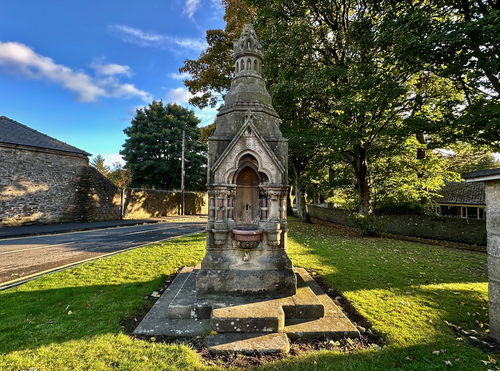
Stanhope Memorial Fountain
Fountain Stanhope County DurhamA memorial fountain dedicated to JJ Roddam, built by the people of Stanhope to commemorate his contribution to the community.
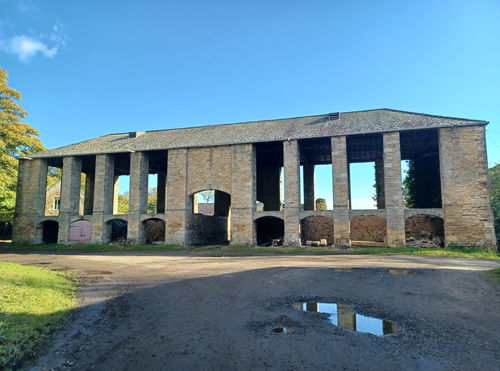
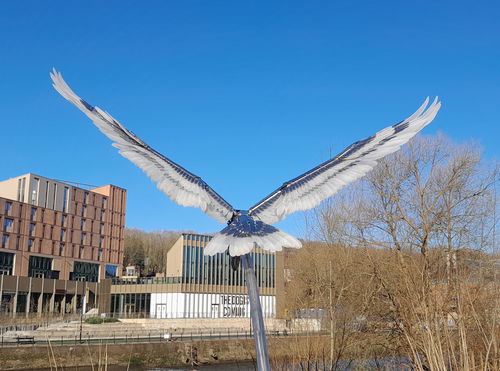

Ushaw Moor Village Sign And Miners Lamp Mural
Art Ushaw Moor County DurhamIndividual artwork creations, on opposite sides of the main road in Ushaw Moor.
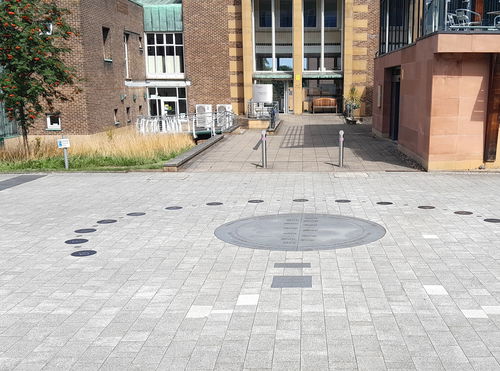
Analemmatic Sundial At Durham University
Art Durham County DurhamAn art/science installation involving audience participation and sunshine.

Willmore Surface Sculpture
Art Durham County DurhamWhen art meets mathematics you get a geometric granite sculpture.
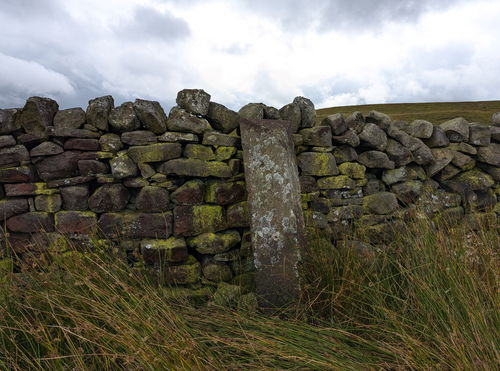
Badger Way Stoop
Landmark Barnard Castle County DurhamA Grade II Listed Ancient waymarker on an old trading route along the County Durham and North Yorkshire border.
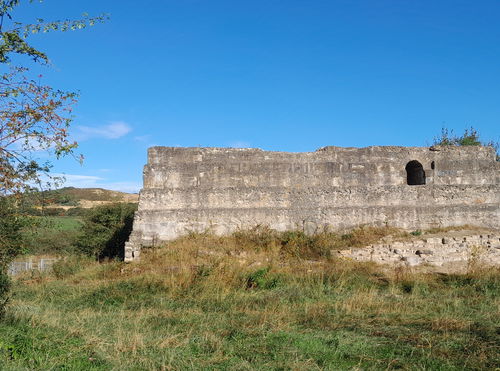
Crowtrees Nature Reserve And Engine House
Building Durham County DurhamA nature reserve which was an old mining area with remains of a monolithic winding engine house.

Art At The Palatine Centre
Art Durham County DurhamAn abundance of art in a striking eco friendly/ green building.

Ward Jackson Park
Landscape Hartlepool County DurhamA well-kept park with Victorian and Edwardian Features, modern works such as spiders and mosaics, plus the poignant ‘Heroism of the Silent Gun’ Boer War memorial.

Heritage Blues (The Pitman)
Statue Durham County DurhamA Miner kneeling testing the air with his safety lamp, by Ray Lonsdale.
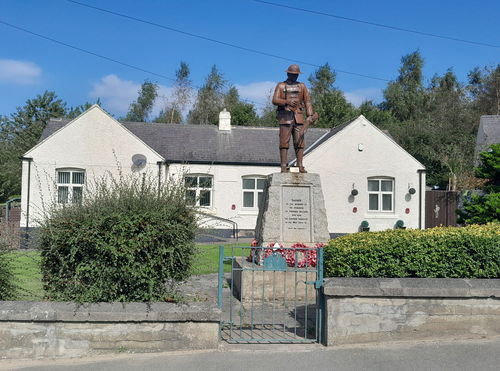
Not Much To Ask War Memorial
Statue Sedgefield County DurhamA World War I memorial of a six foot soldier, with his rifle lowered, taking a drink from his canteen by Ray Lonsdale.
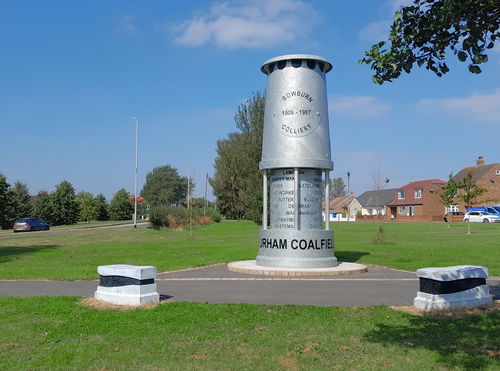
The People's Lamp
Art Durham County DurhamA large-scale Miners Lamp to honour the Bowburn Colliery and the wider Durham coalfields.
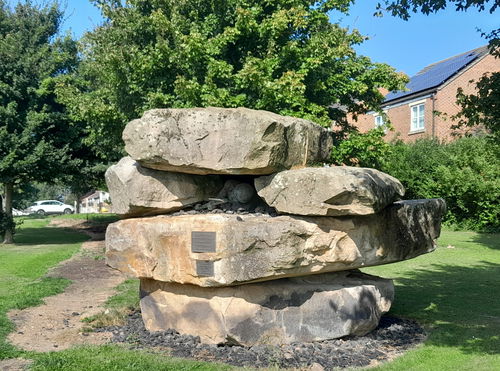
Fishburn Mining Memorial
Statue Sedgefield County DurhamA memorial to the mining past depicting a miner with a pickaxe, working in a narrow seam.
The Queen Elizabeth II Beacon of Hope
Art Sedgefield County DurhamA gas-fired beacon installed for Queen Elizabeth II's Platinum Jubilee.

Andy Capp Statue
Statue Hartlepool County DurhamFigure of newspaper cartoon character Andy Capp cast in bronze.

Observatory Obelisk
Landmark Durham County DurhamA unintentionally concealed 90 foot tall way marker marking north for astronomers at Durham University one mile south.
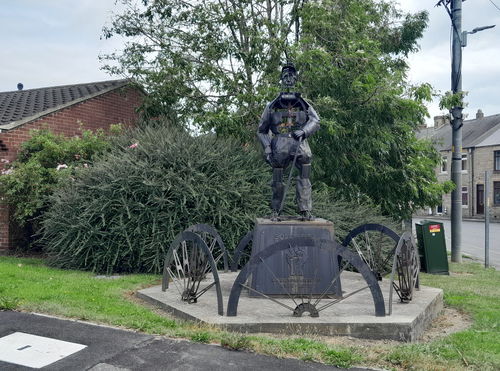
Solidarity Miners Statue
Statue Ushaw Moor County DurhamAn arresting piece of steel art by Stanson Art (Ron Lawson) and Mark Burns Cassell commemorating the coal industry in the area.

Cry For Justice - The Scream
Art Durham County DurhamCarved statues in distress near the Bill Bryson Library in Durham University.

St Mary The Virgin Easington Village
Religious Place Peterlee County DurhamA noticeable Norman Church on commanding a hill in Easington Village .
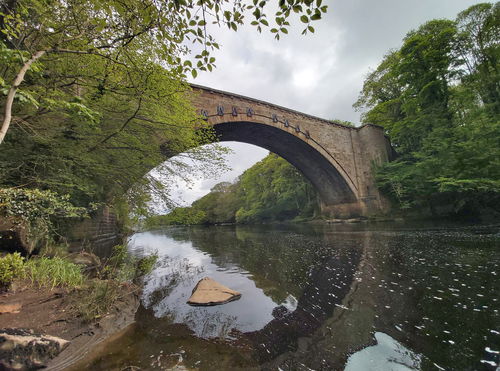
Winston Bridge Spitfire
Bridge Barnard Castle County DurhamA bridge spanning the River Tees where Ray Hanna flew his Spitfire under.

Steel Ladle Truck
Machinery Consett County DurhamA ladle train that would transfer hot metal within the Consett Steelworks.

St. Nics Church Durham
Religious Place Durham County DurhamA stunning church providing a backdrop for Durham Market Place and a lively place in which to worship.
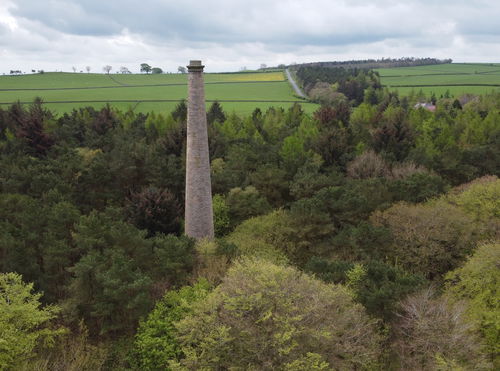
Copley Chimney
Chimney Bishop Auckland County DurhamA 35m tall chimney that was part of the Gaunless Valley Lead Mill.

Red Lion Farm Trig Point
Trig Point Hartlepool County DurhamThe Red Lion Farm trig point sits in a hedge (66m) near Hartlepool.

Canary Mural Wheatley Hill
Art Peterlee County DurhamA stunning mural depicting the release of a yellow canary which references the area's mining days and has significance for the future.
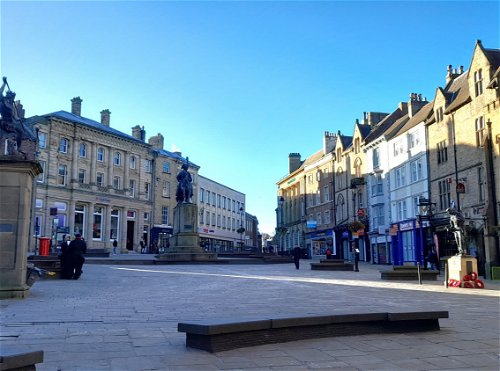
Durham Market Place
Statue Durham County DurhamA gem of a market place with interesting sculptures, some secret creatures, and a timeline.
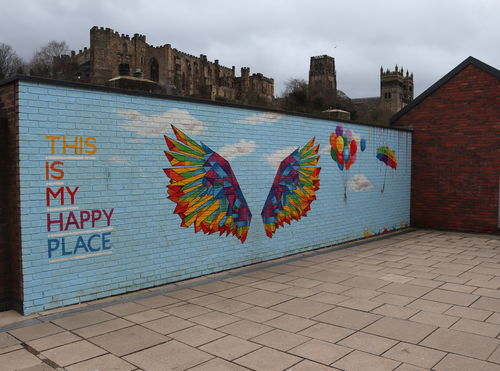
Durham Riverwalk Selfie Wall
Art Durham County DurhamArtwork on a call of angel wings, balloons and an umbrella, set up ready for a selfie.
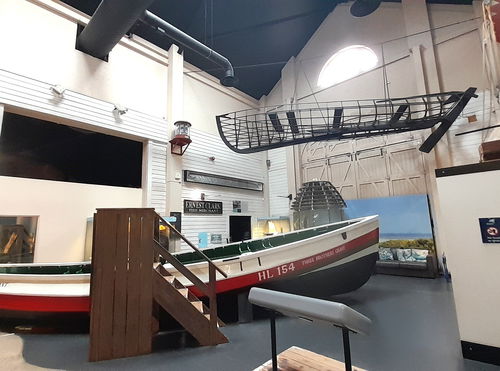
Museum Of Hartlepool
Museum Hartlepool County DurhamDiscover history on Hartlepool's maritime history with some unusual and macabre pieces.
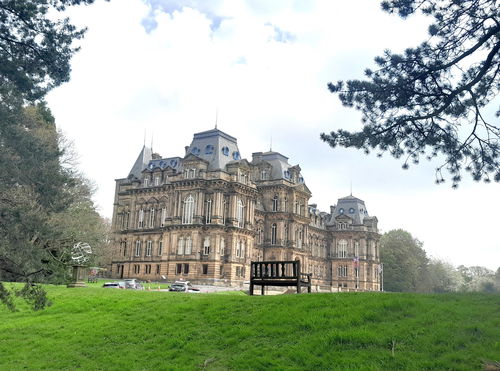
Bowes Museum
Museum Barnard Castle County DurhamDesigned and built as a museum in the style of a French Chateau and housing 22 galleries. Famous for the amazing kinetic art of the Silver Swan.

Eggleston Moor Trig Point
Trig Point Middleton-in-Teesdale County DurhamThe Eggleston Moor trig point sits on Grey Carrs moorland (461m) near Middleton-in-Teesdale.

Chemical Beach
Landscape Seaham County DurhamA juxaposed scene, with chaldron wheels, industrial remains, and an old jetty against a backdrop of organic appeal.
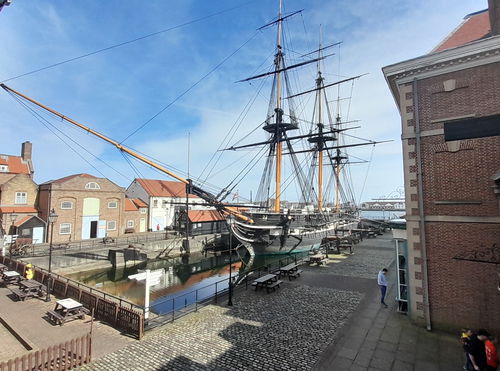
The National Museum Of The Royal Navy Hartlepool
Museum Hartlepool County DurhamAll that would have been dock life around the 18th century and complete with one of The Admiralties Frigates, The HMS Trincomalee.
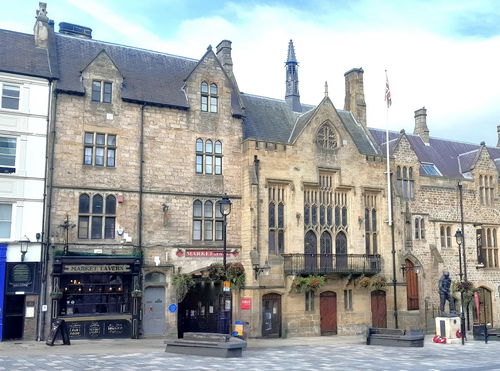
Durham Town Hall
Building Durham County DurhamA splendid feast of medieval lookalike architectural delights, and other things.
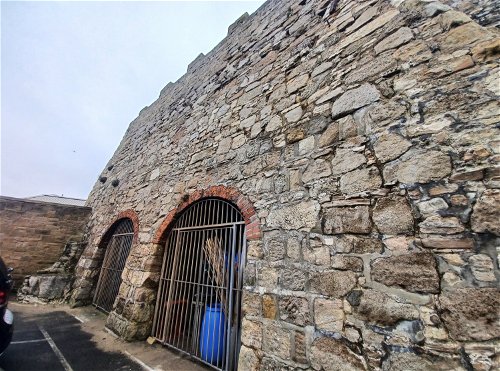
Seaham Lime Kilns
Lime Kiln Seaham County DurhamLime kilns located at Seaham harbour, restored in 2005.
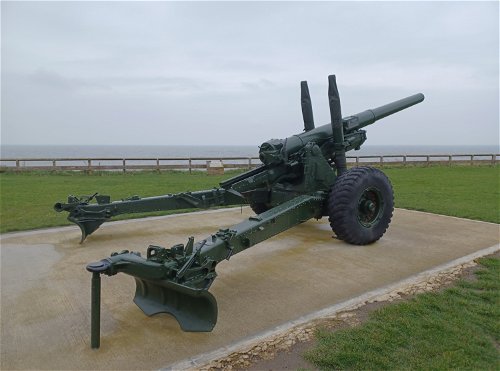
The Howitzer Gun
Military Seaham County DurhamA 5.5 inch Howitzer Gun to celebrate Seaham's links to the Royal Artillery and coastal defence during WWII.

Shacklesborough Trig Point
Trig Point Barnard Castle County DurhamThe Shacklesborough trig point sits above Balderhead Reservoir (454m) near Barnard Castle.
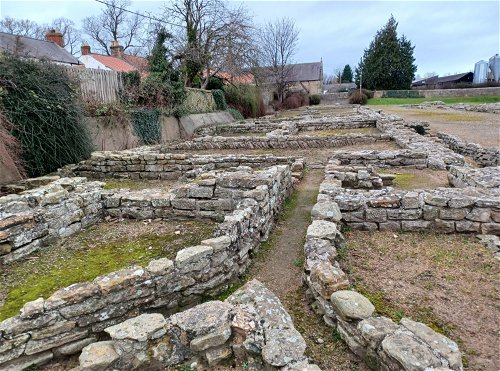
Piercebridge Roman Fort
Building Darlington County DurhamRemains of a roman fort built around 260AD

Vane Tempest Sculpture
Art Seaham County DurhamSculpture depicting the skyline of the old Vane Tempest colliery in Seaham.

Shildon Railway Art Works
Art Shildon County DurhamA series of railway related art works in Shildon.
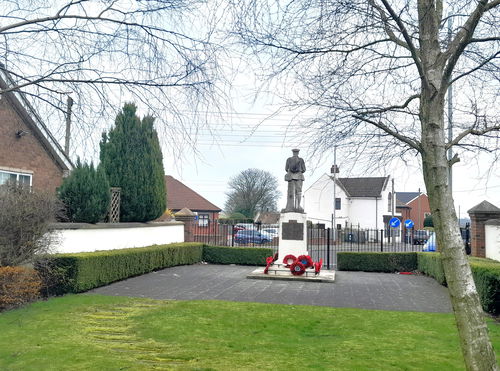
Shotton Colliery War Memorial
Military Shotton County DurhamLifesize Durham Light Infantry soldier atop a plinth with his rifle.
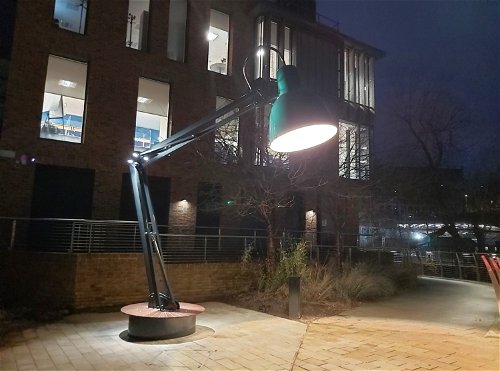
Lampounette Near The Penny Ferry Bridge
Art Durham County DurhamYes, a 20 foot high desk lamp in green that was part of the Lumiere festival.

Murton Cenotaph And Children of Mothers
Statue Seaham County DurhamA serene sculpture by Ray Lonsdale, positioned eloquently by The Cenotaph in Murton, near Seaham.
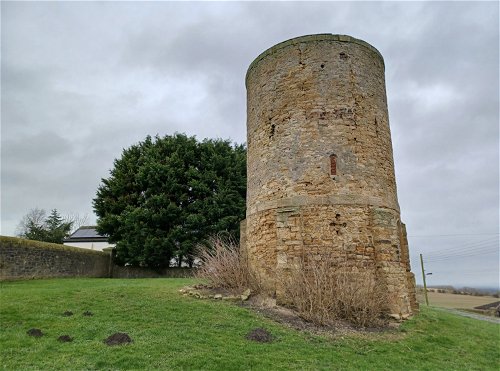
Thomas Wright Observatory
Folly Bishop Auckland County DurhamObservatory dating from 1765, built by local astronomer Thomas Wright.
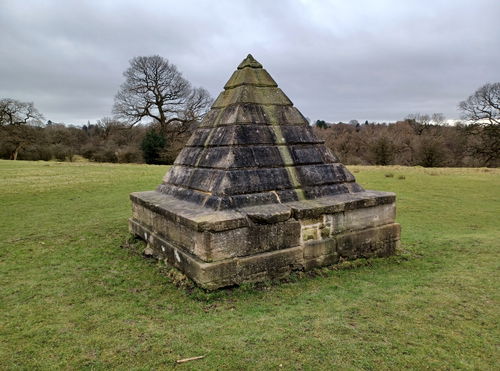
Auckland Park Pyramid
Obelisk Bishop Auckland County DurhamA decorative well head built in the 18th century.
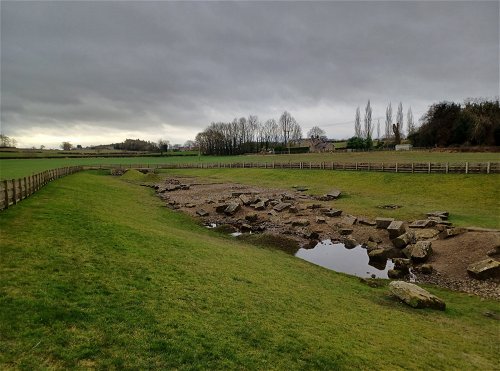
Piercebridge Roman Bridge
Bridge Darlington County DurhamRemains of a Roman Bridge that carried Dere Street over the River Tees.
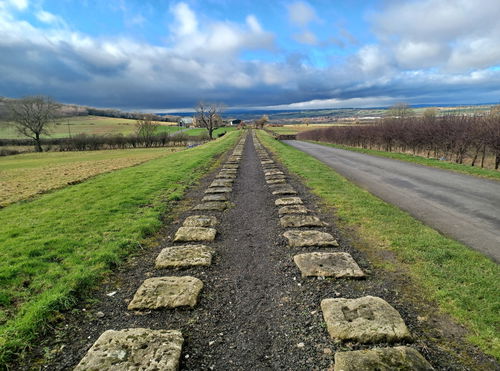
Brusselton Incline
Landmark Bishop Auckland County DurhamRemains of part of the original Stockton and Darlington Railway main line, built in 1825.

Woodland Trig Point
Trig Point Witton le Wear County DurhamThe Woodland trig point sits on Hindon Hill (370m) near Witton le Wear.
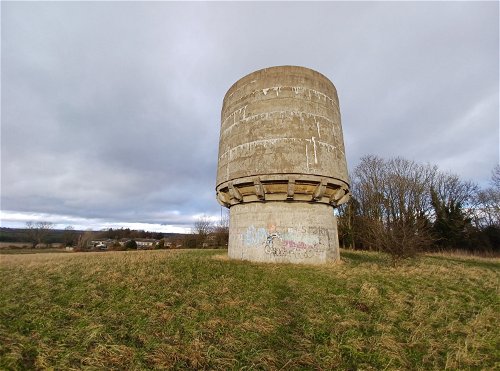
School Aycliffe Water Tower
Water Tower Newton Aycliffe County DurhamA disused water tower that once supplied Aycliffe Hospital.
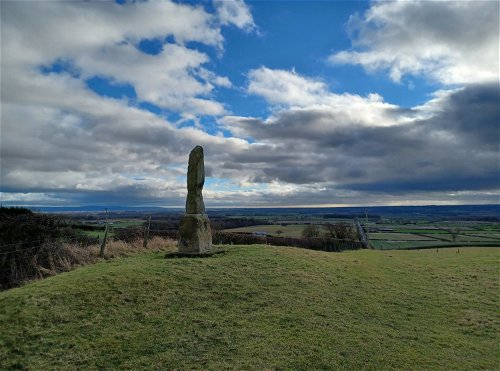
Legs Cross
Landmark Darlington County DurhamThe remains of a Saxon Cross adjacent to the B6275 which follows the line of the old Roman Road Dere Street.
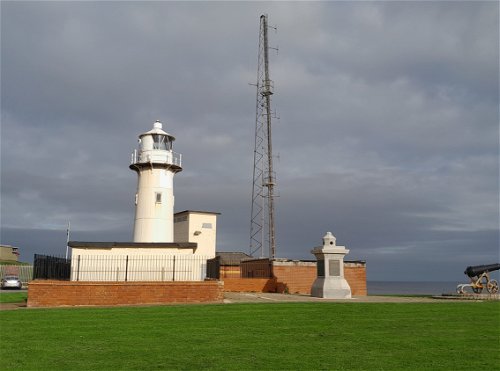
The Heugh at Hartlepool Headland
Lighthouse Hartlepool County DurhamThis peninsula has several pleasing aspects such as a lighthouse, a cannon and the goddess Nike atop the war memorial.
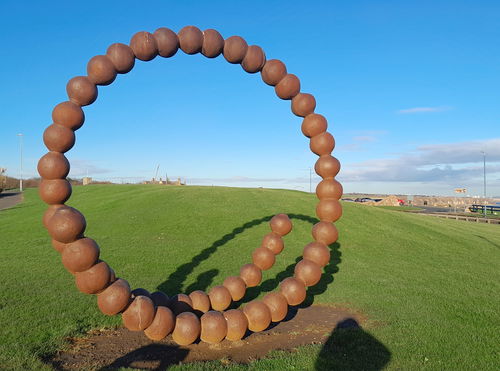
Jewels Of The Sea
Art Seaham County Durham34 pieces of enlarged micro marine life made from weathered Corten steel by Andrew McKeown at East Shore Village, Seaham.
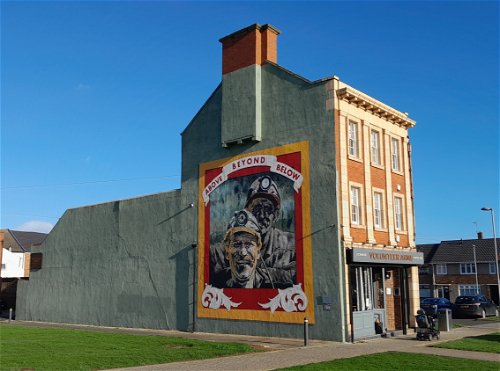
Above Beyond Below Mural
Art Seaham County DurhamA mural of miners on the side of The Volunteer Pub in the St Johns area of Seaham.
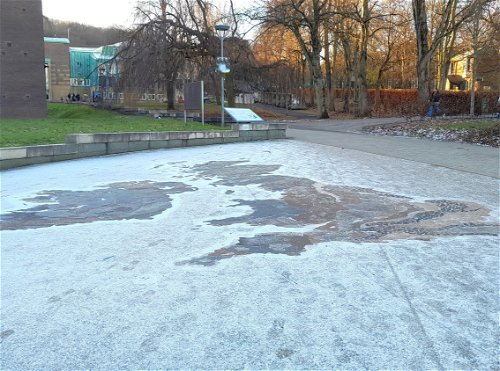
What Lies Beneath Us
Art Durham County DurhamA large scale pavement map showing the geology of The British Isles.
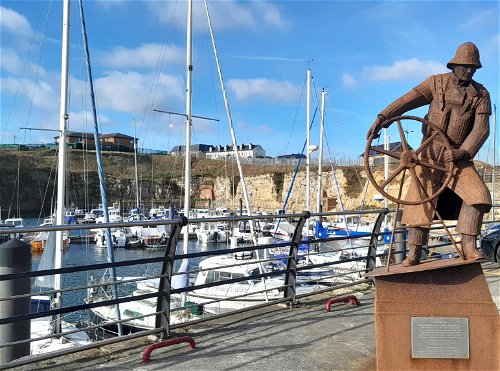
The Coxswain And The George Elmy Lifeboat
Statue Seaham County DurhamA Coxswain Statue by Ray Lonsdale is a tribute to the RNLI and the 9 lives lost on the Lifeboat 'The George Elmy'.

Eldon Hall Farm Trig Point
Trig Point Bishop Auckland County DurhamThe Eldon Hall Farm trig point sits in a field (168m) near Bishop Auckland.
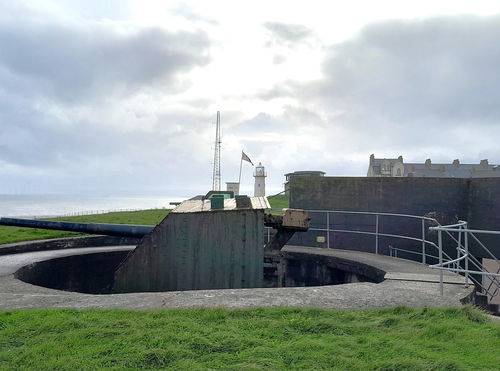
The Heugh Battery Museum at Hartlepool Headland
Museum Hartlepool County DurhamThe site preserves the only First World War battle site in Blighty.
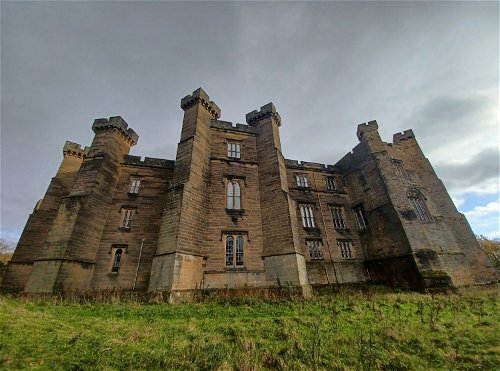
Brancepeth Castle
Castle Durham County DurhamImpressive castle owned by the Neville family until the 16th century.

Royal Oak Trig Point
Trig Point Bishop Auckland County DurhamThe Royal Oak trig point once stood in a plantation (223m) near Bishop Auckland.
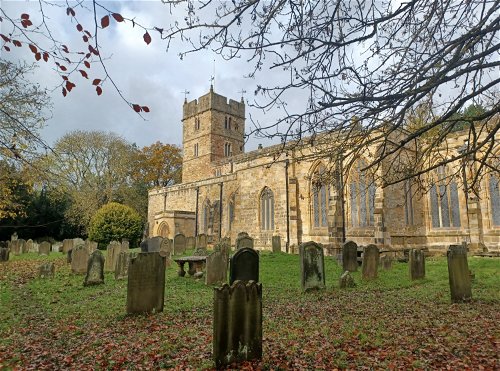
St Brandon's Church
Religious Place Durham County DurhamAnglican church in Brancepeth, with views over to the stunning Brancepeth Castle.
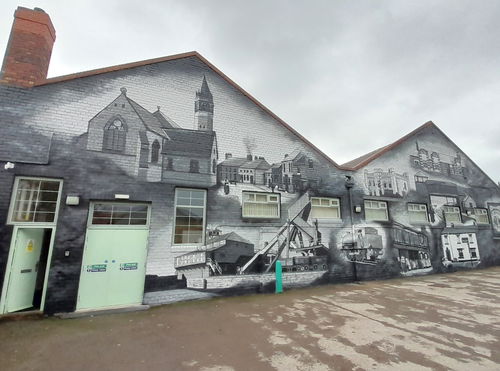
Work, Rest, Pray Painting At Sherburn Village Community Centre
Art Durham County DurhamAn outstanding painting at Sheburn Village by Jordan Stead AKA Twenty Six Studio. It has become the pride of the village.
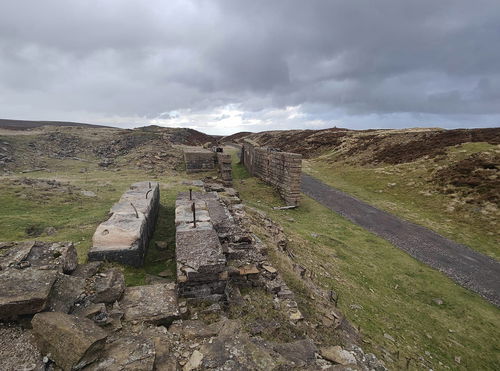
Bolts Law Standing Engine House
Building Stanhope County DurhamBuilt in 1846, the standing engine hauled railway trucks up and down an incline into Rookhope.

Toy Top Trig Point
Trig Point Bishop Auckland County DurhamThe Toy Top trig point is in woodland (208m) near Bishop Auckland.
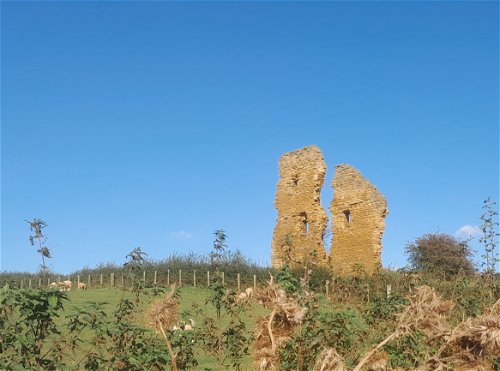
Ludworth Tower
Tower Durham County DurhamRemains of a romantic looking pele tower on a hill with scenic views.
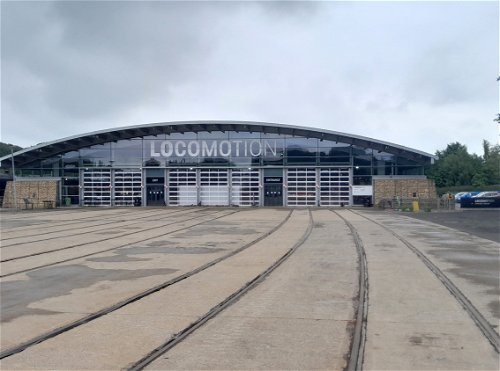
Locomotion
Museum Bishop Auckland County DurhamLocomotion in Shildon is a captivating railway museum that showcases the history of locomotives and their impact on transportation.

Durham Mining Museum
Museum Durham County DurhamA multitude of artifacts, equipment, models, photographs and information on all things mining.

Denton Cross Roads Trig Point
Trig Point Newton Aycliffe County DurhamThe Denton Cross Roads trig point sits in a hedge (88m) near Newton Aycliffe.
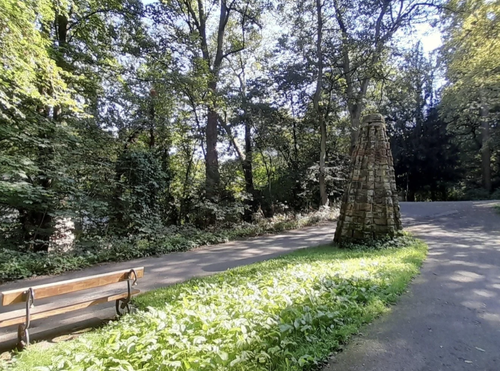
Reveal by Richard Cole
Art Durham County DurhamA tall pyramidical structure made with repurposed stone from a Durham Cathedral turret.
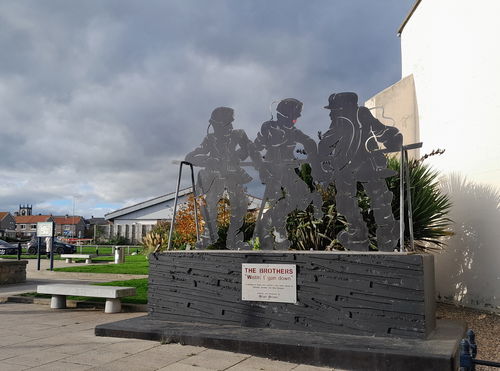
The Brothers
Statue Seaham County DurhamA sculpture of three miners waiting to go down the pit. It’s a reminder of the three mines that Seaham once had.

Keverstone Grange Trig Point
Trig Point Barnard Castle County DurhamThe Keverstone Grange trig point sits in a hedge (193m) near Barnard Castle.

Mickle Fell Trig Point
Trig Point Middleton-in-Teesdale County DurhamThe Mickle Fell trig point sits above Lune Forest on MOD land (758m) near Middleton-in-Teesdale.

St Thomas the Apostle Church
Religious Place Stanhope County DurhamA Grade II* listed Church, dedicated to St Thomas the Apostle, in Stanhope.

Cote Hill Trig Point
Trig Point Newton Aycliffe County DurhamThe Cote Hill trig point sits in a hedge (141m) near Newton Aycliffe.
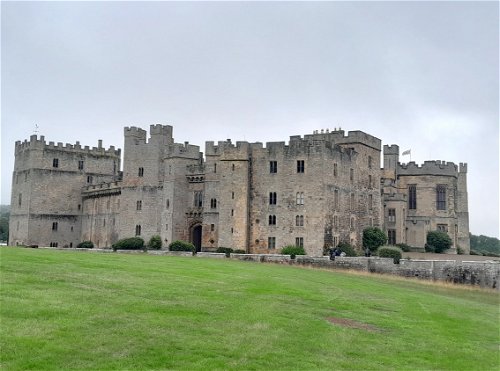
Raby Castle
Castle Barnard Castle County DurhamMedieval, Regency, and Victorian splendour all under several roofs. A wonderful deer park and woods. Oh and of course, it's haunted!

Blue House Trig Point
Trig Point Bishop Auckland County DurhamThe Blue House trig point sits in a hedge (231m) near Bishop Auckland.

Crow Coal Hill Trig Point
Trig Point Stanhope County DurhamThe Crow Coal Hill trig point sits on Reahope Moor (466m) near Stanhope.

Blackhall Rocks
Landscape Hartlepool County DurhamDramatic landscape and panoramic views of the coast. Stone art with science, history and mythology.
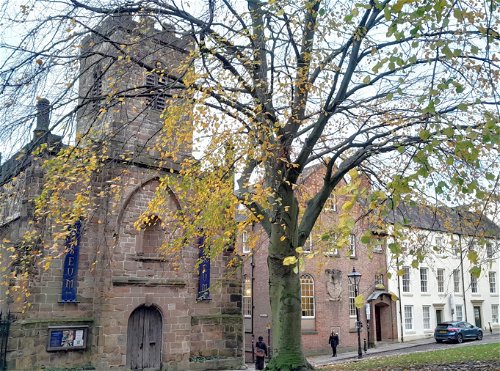
Durham Museum and Heritage Center.
Museum Durham County DurhamFormer St Mary le-Bow Church, hosting displays on Durham history.

Thistle Green Trig Point
Trig Point Middleton-in-Teesdale County DurhamThe Thistle Green trig point sits on Cronkley Fell (544m) near Middleton-in-Teesdale.

Whorley Resr Trig Point
Trig Point Barnard Castle County DurhamThe Whorley Resr trig point sits next to a Reservoir (184m) near Barnard Castle.

Waldridge Fell
Landscape Chester-le-Street County DurhamStunning 284 acre country park with woodlands, wetlands and lowland heath.

Murals At The Headland, Hartlepool
Art Hartlepool County DurhamStunning art around the Headland at Hartlepool. Each one has a story.

Hillingdon Farm Trig Point
Trig Point Barnard Castle County DurhamThe Hillingdon Farm trig point on the edge of a field (249m) near Barnard Castle.
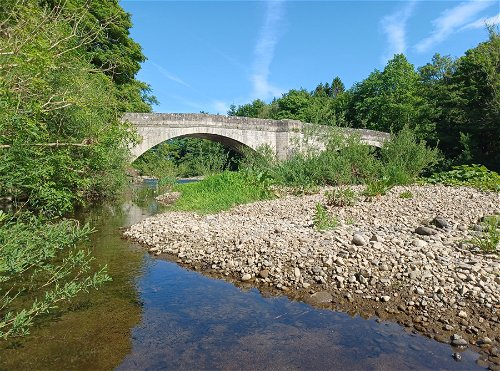
Clemmy Bank Bridge
Bridge Witton le Wear County DurhamPretty little 18th century bridge over the River Wear in Witton Le Wear.
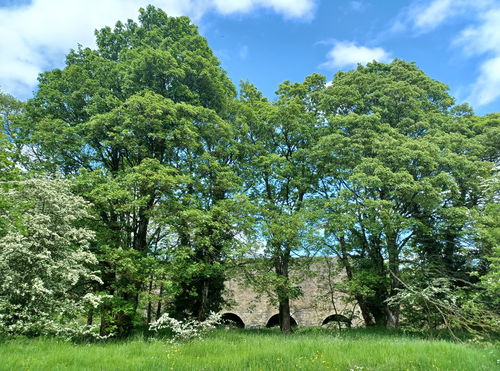
Bishopley Lime Kilns
Lime Kiln Frosterley County DurhamLime kilns built in 1847, hidden away in the beautiful Weardale countryside.

Lintzgarth Common Trig Point
Trig Point Rookhope County DurhamThe Lintzgarth Common trig point sits on Windy Hill (554m) near Rookhope.

Hardberry Hill Trig Point
Trig Point Middleton-in-Teesdale County DurhamThe Hardberry Hill trig point sits above the Coldberry Gutter (530m) near Middleton-in-Teesdale.
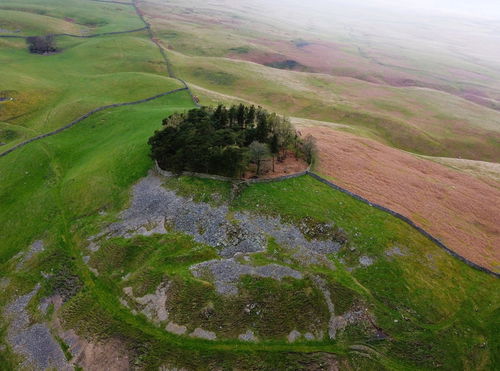
Kirkcarrion
Landmark Middleton-in-Teesdale County DurhamAn ancient burial ground for a Bronze Age chieftain called Prince Caryn.

Carr Brow Moor Trig Point
Trig Point Stanhope County DurhamThe Carr Brow Moor trig point sits on moorland (504m) near Stanhope.
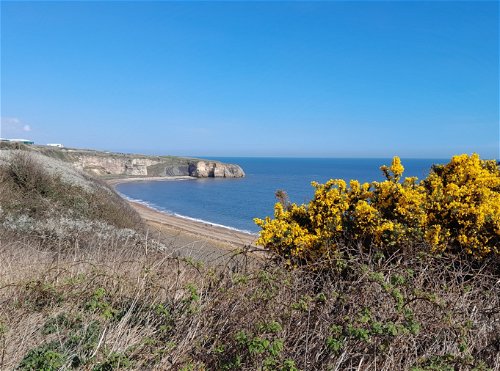
Blast Beach at Nose's Point Seaham
Landscape Seaham County DurhamA coastal success in the Turning of the Tide Project and something for all the senses

Raven Hills Trig Point
Trig Point Middleton-in-Teesdale County DurhamThe Raven Hills trig point sits on Monks Moor (522m) near Middleton-in-Teesdale.
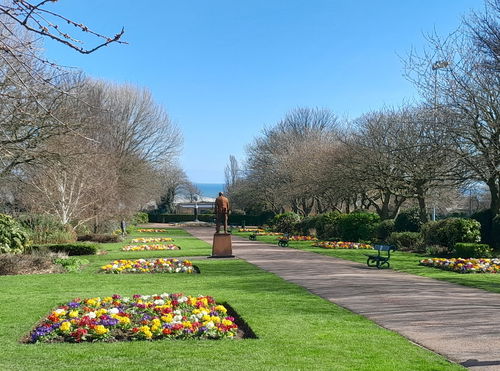
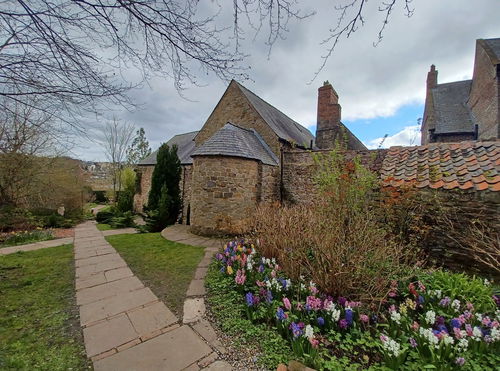
Crook Hall Gardens
Building Durham County DurhamSmall National Trust site with medieval hall dating back to the 13th century.
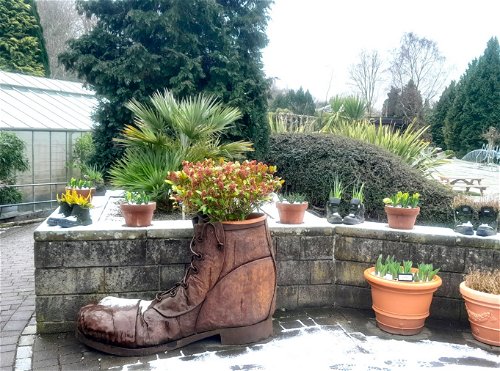
Botanic Gardens Durham
Garden Durham County Durham25 acres of plants from five continents. Also eye-catching art installations such as boots, bugs, and fungi.

Westernhope Moor Trig Point
Trig Point Middleton-in-Teesdale County DurhamThe Westernhope Moor trig point sits on moorland (676m) north of Middleton-in-Teesdale.
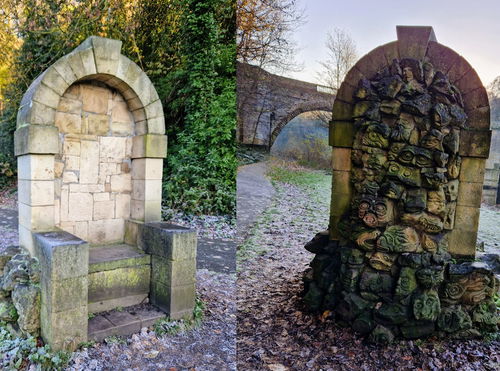
Kathedra
Statue Durham County DurhamA stone chair of carved gargoyles situated in Durham on the banks of the river Wear.

Hart Trig Point
Trig Point Hartlepool County DurhamThe Hart trig point sits in a hedge (127m) near Hartlepool.
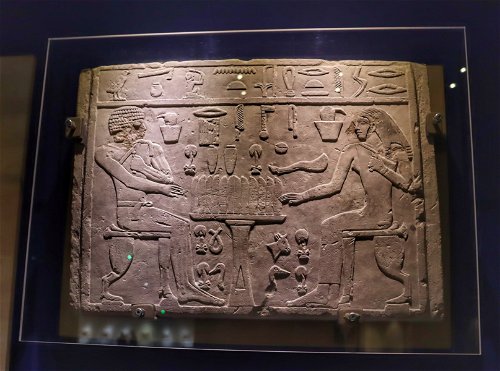
Oriental Museum
Museum Durham County DurhamA museum containing collections from cultures and histories of northern Africa to Asia including more than 30,000 objects of art, textiles, ceramics, and manuscripts.
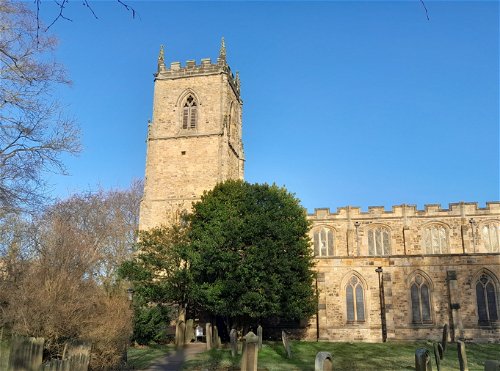
Saint Oswald's Church Durham
Religious Place Durham County DurhamA lovely church in a quintessentially British setting. Possibly the oldest in the Durham diocese.
Filter Results
Filter the places by category or their location, or even search by a keyword.
